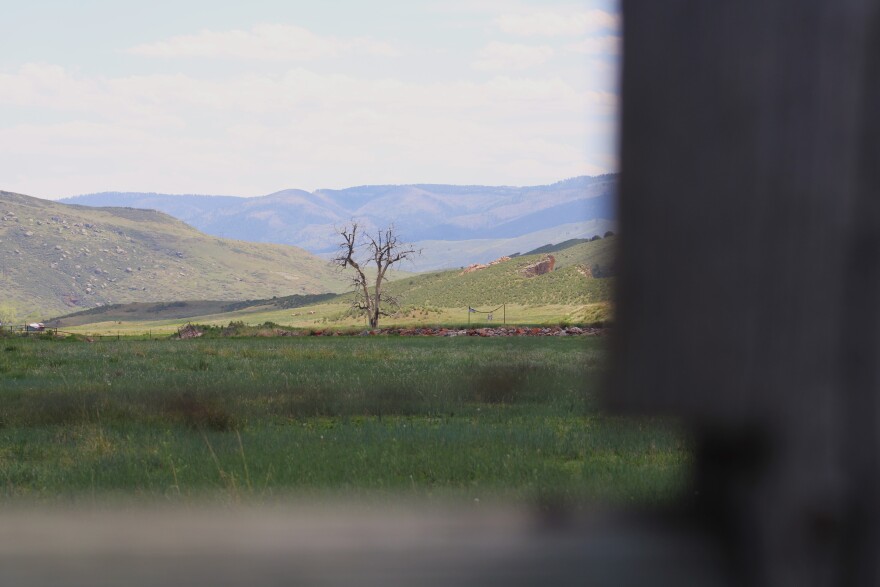Rumblings of unease about a massive new reservoir project in Northern Colorado are growing louder. The Fort Collins-Loveland Water District, which is currently the largest shareholder in the Northern Integrated Supply Project, is raising major concerns about the project’s future and looking to sell off some of its rights to store water in the new reservoir system.
The Northern Integrated Supply Project, or NISP, is a yet-to-be-built water storage system designed to meet the demands of fast-growing towns and cities in Northern Colorado. It has been in the works for more than two decades. As the years have ticked on, rising construction costs and a growing field of other options for water supply have caused waning enthusiasm in NISP, with some cities pulling back their level of involvement.
Now, Fort Collins-Loveland Water District (FCLWD) is going public with grievances about the way the new reservoirs will be built and funded. That includes Glade Reservoir, which would fill a grassy valley north of Fort Collins and force about seven miles of U.S. Highway 287 to be rerouted.
FCLWD supplies water to a roughly 60-square-mile area between Harmony Road and U.S. Route 34. FCLWD shared its concerns at a closed-door meeting between Northern Water, the agency building the reservoirs, and NISP participants — the water districts and cities that are signed up to store water in the new reservoir.
In an interview with KUNC, the agency’s general manager, Chris Pletcher, outlined those issues. In October, Northern Water will ask participants to sign off on the project’s financial plan, which is expected to include more than $2 Billion in costs. If today was the day to sign it, Pletcher said, he wouldn’t.
Pletcher said Northern Water is asking them to sign an “unreasonable” contract that opens participants up to too much risk.
“Participants get no say in the contract,” he said. “All those contractual decisions are made by Northern Water. There's no upper limit to the cost that participants may have to bear. There's no guarantee that Northern Water will actually deliver a project.”
Pletcher compared it to a person hiring a contractor to build a new home.
“Maybe you're building a custom house, and your homebuilder says, I'll build you a house, but I'll decide what I'm going to build,” he said. “Maybe it's a tiny house, maybe it's a mansion. You just pay the bill, maybe I go bankrupt, but you just pay the bills for that … Nobody would do that. That's the context of the decision we have in front of us on the financing terms. It's just untenable in terms of risk.”

Northern Water declined to provide comment for this story.
Pletcher may have good reason to worry about rising costs. He said they have gone up more than 25% in the past six months. The cost to build NISP has risen significantly during a planning and permitting process that has lasted about two decades. It was originally pitched at $400 million, and is now expected to cost $2.2 billion.
Some of the towns, cities and water districts who will bear that cost are getting cold feet. In July 2024, four different shareholders offloaded some of their involvement in the project.
“I think for smaller towns it was a great idea back when it was affordable to us," Nicholas Wharton, town manager in Severance, told KUNC earlier this year.
When those four shareholders decided to sell, they only found one buyer: the Fort Collins-Loveland Water District. Pletcher said his district is taking a different tack now that the details of the project’s finances and building plans are more clear and closer to finalization. He also said FCLWD is diversifying its water portfolio after signing a new deal to tap into an underground aquifer.
“I don't have any regrets based on the information that we had two years ago,” he said. “I think that was a strategic decision at that time. But now that we've gotten to this point of clarity and realize that the economic impact of this project and the risk terms are just not tenable to the district.”
Now, barely a year after doubling its shares in the new reservoir project, FCLWD is looking to get out.
“If there were a buyer that was interested,” Pletcher said, “We are interested in selling those shares.”
This story is part of ongoing coverage of water in the West, produced by KUNC in Colorado and supported by the Walton Family Foundation. KUNC is solely responsible for its editorial coverage.






